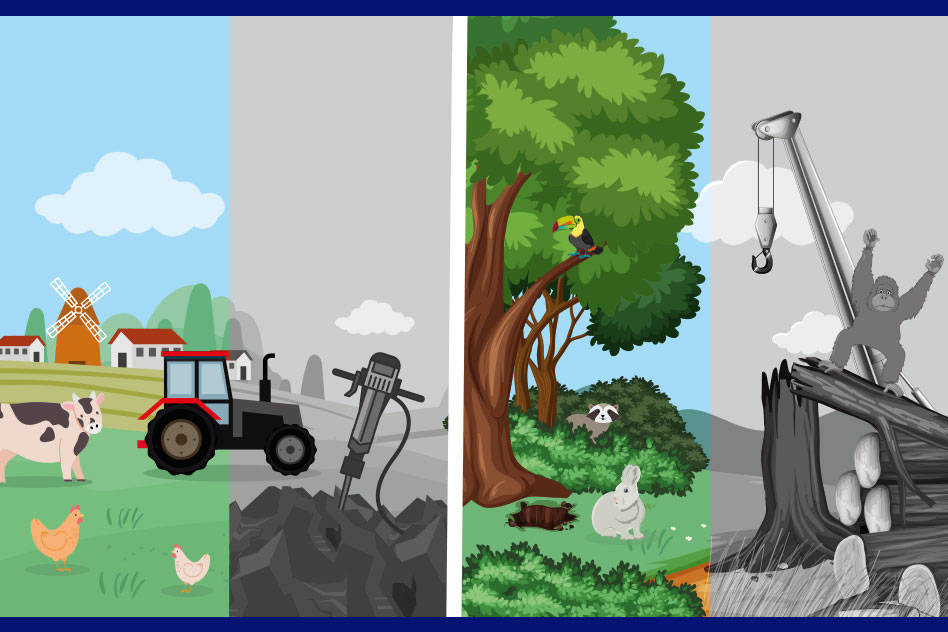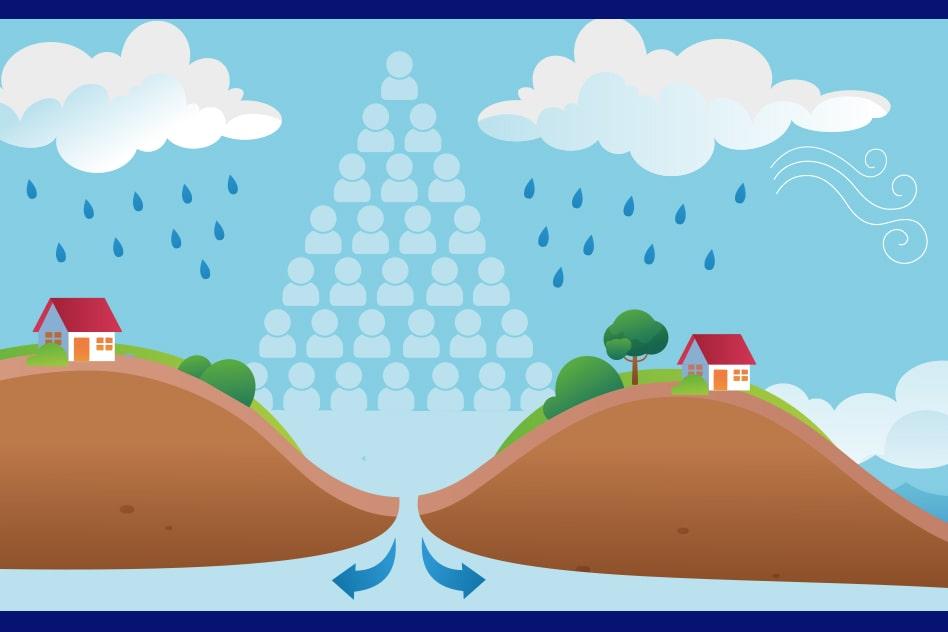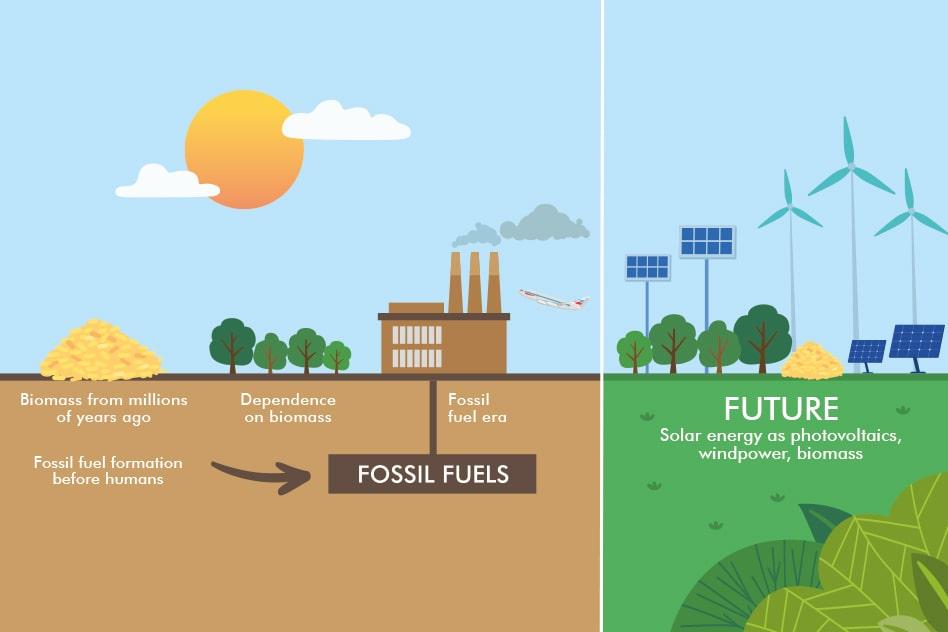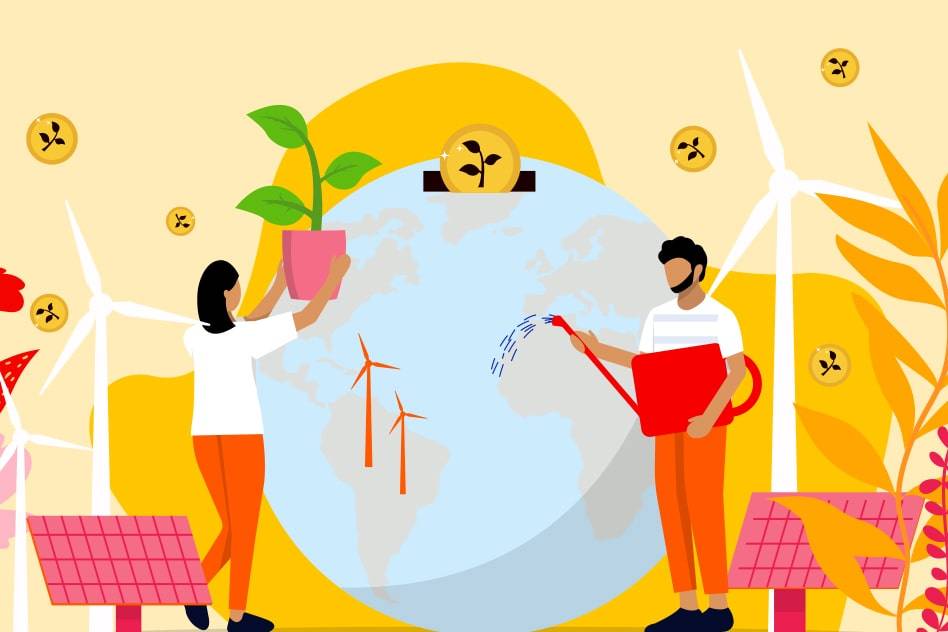Combating Climate Change: The Role of Science and Engineering
Posted on: November 8, 2021
Both humanity and our planet exist at a critical turning point due to climate change and the resulting environmental challenges we face. Sustainability solutions need to be a focal discussion in the fight against global warming — and scientific work, engineering and the circular economy are at the center of these answers.
To recenter sustainability in today’s world, there needs to be a disruptive change in the way our society understands the world. How businesses operate, how we educate students and how science influences and communicates with our political leaders and the general public needs a rethink. The circular economy, an industrial system that is designed to create a restorative or regenerative cycle for business models, must be reframed as an expectation rather than an option for the future. Similarly, scientific education and sustainability are intrinsically linked, so courses that navigate that relationship are integral to our future innovations.
For in-depth knowledge and understanding, we recommend the following resources:
o Discover the evolution of the circular economy, including key concepts, programs, policies and regulations. Browse through hand-picked case studies, as well as unique activities in each chapter of Prasad Modak’s “Practicing Circular Economy.”
o Learn university-level environmental chemistry with an increased emphasis on sustainability and green chemistry in Stanley E. Manahan’s “Fundamentals of Environmental and Toxicological Chemistry.”
o Reframe how undergraduate engineering students can incorporate sustainability into their learning and practices with Toolseeram Ramjeawon’s “Introduction to Sustainability for Engineers.”
o From the mundane to the beautiful, the natural world makes our everyday lives possible. We're often blind to the unsustainability of modern life and the ecology behind everyday things; explore how we can better treat the natural world in Mark Everard’s “The Ecology of Everyday Things.”
o Confront what it means to “value nature” in this graphic book that journeys through the diverse areas of natural resource management and its importance within scientific and practical work. Check out Robert Fish and Holly McKelvey’s “Valuing Nature.”
o Examine the impacts of our Fourth Industrial Revolution and the social, political, cultural and economic disruptions that emerging technologies have on our society in Felix Dodds, Carolina Duque Chopitea and Ranger Ruffins’ “Tomorrow's People and New Technology.”
Sustainability solutions for land
From farm to forest, the land is the critical uniting component that humanity depends on. Yet, we’re at a turning point due to factors such as population growth, degradation of ecosystems and overuse of natural resources where our land is at risk. As we put more pressure on the ground beneath us, how can we find solutions to face these challenges head-on?
The answer is in our soil and agricultural practices. Current land management and crop processes weren’t built with long-term sustainability or climate change in mind. However, there are innovative, new soil management solutions, crop types and saline soil opportunities that can help us face the future challenges of global climate change.

Read on to learn about the sustainability opportunities for soil, agriculture, crop production and more:
o Soil management practices are a key sustainability solution that can mitigate climate change and improve environmental quality. Reimagine how managing land productivity and carbon flows can make a global difference with Rattan Lal and B. A. Stewart’s “Soil and Climate.”
o Take a dive into agroecology within the framework of climate change. Learn how farmers are combating climate change and how crop types may house solutions in Noureddine Benkeblia’s “Climate Change and Crop Production.”
o Food security is a rapidly pressing issue as we continue to deplete our supply of fresh water. Cover how food production on present and future saline soils may be the answer to the future of sustainable agriculture in Katarzyna Negacz, Pier Vellinga, Edward Barrett-Lennard, Redouane Choukr-Allah and Theo Elzenga’s “Future of Sustainable Agriculture in Saline Environments.”
o An essential reference text, this book aims to explore the nature of climate change and its roots in the whole climatic system. Explore Arthur P. Cracknell and Costas A. Varotsos’ “Understanding Global Climate Change” and access a free PDF version of this book here.
Sustainability solutions for water
Globally, we’re facing a water crisis: demand is increasing, aquifers are being depleted and we’re experiencing extreme weather more often than ever before. To sustain humanity and increasing populations, water resource management, green chemistry and more must be incorporated into the infrastructure of our worldwide systems.
Beyond the depletion and pollution of our global water resources, humans are increasingly harming the exciting biodiversity of marine life. Traditional water resources management and business practices are hurting ourselves and the world around us. Yet, there are potential solutions on the horizon: across the world, scientists and communities are exploring climate change-focused processes, groundwater sustainability, green chemistry principles and more to fight pollution and our growing water crisis.

Explore the following literature options for water-focused climate change ideas, methodologies and interventions:
o Delve into the detailed research, theories and more related to climate change-sensitive water resources management in Ramesh S.V. Teegavarapu, Elpida Kolokytha and Carlos de Oliveira Galvão’s “Climate Change-Sensitive Water Resources Management.”
o Comb through 19 unique case studies that show how groundwater makes a sustainable difference across 16 countries around the world in Viviana Re, Rodrigo Lilla Manzione, Tamiru A. Abiye, Aditi Mukherji and Alan MacDonald’s “Groundwater for Sustainable Livelihoods and Equitable Growth.”
o Pollutants are increasing water pollution and water quality damage, yet removing their presence is incredibly challenging. Read about the latest green chemistry practices and principles designed to combat these issues in Sanjay K. Sharma’s “Bioremediation: A Sustainable Approach to Preserving Earth’s Water.”
o Don’t forget what else is at stake with climate change: the biodiversity of marine life on our planet and its conservation. Celebrate biodiversity and get inspired to protect it before it’s too late with Alan J. Powderham and Sancia van der Meij’s “At the Heart of the Coral Triangle.”
Sustainability solutions for energy
When we discuss climate change challenges, many of us first think of the probable energy crisis that we will face in the ever-near future. Fossil fuels are becoming increasingly scarce, while CO2 emissions continue to rise across the globe. Implementing widespread, new renewable energy sources is the necessary solution for future energy needs and security.
Yet, that requires a monumental shift in the way students, scientists and global leaders understand renewable energy and climate change. Renewable energy is the future, so how our students learn about energy, chemistry and technology must be refocused to center sustainability as the foundation of innovation — not just a side note.

Discover ways to address our current energy challenges in the below texts:
o Access an in-depth introduction to renewable energy science with an overview of the basic physics to conservation, economic and public policy issues in Robert Ehrlich and Harold A. Geller’s “Renewable Energy.”
o With the growing interest in renewable energy, new ideas and innovations are needed to address climate change. Read through the latest systems and related information for innovative and affordable renewable energy systems within Vladimir Strezov and Hossain Md. Anawar’s “Renewable Energy Systems from Biomass.”
o Chemistry is a critical component of any long-term sustainable energy solution. Check out how Nancy E. Carpenter integrates green chemistry into the renewable energy discussion with “Chemistry of Sustainable Energy.”
Looking to the future of sustainability
There is a future where both nature and humanity can not only coexist but thrive together. Yet, the reality of this vision lies in the practical application and integration of scientific processes, technologies and policies. So how do we get there and what does it mean to implement societal change for sustainability?
There are clear potential solutions through mitigation strategies, such as reducing our use of carbon, implementing renewable energy and investing in severe weather-resilient buildings. However, there are also financial burdens to these changes that must be considered to make them viable options. Practicing professionals need to understand sustainability funding sources, governmental budgets, international capital markets and more to create necessary change in the modern world.

This book covers what climate change issues and mitigation strategies may look like in practice:
o Find out what it will cost us to mitigate the effects of global warming across the world. Learn about the non-carbon energy sources that need to be adapted, the financial burden of adapting to climate change and more in Michael Curley’s “The Price of Climate Change: Sustainable Financial Mechanisms.”

